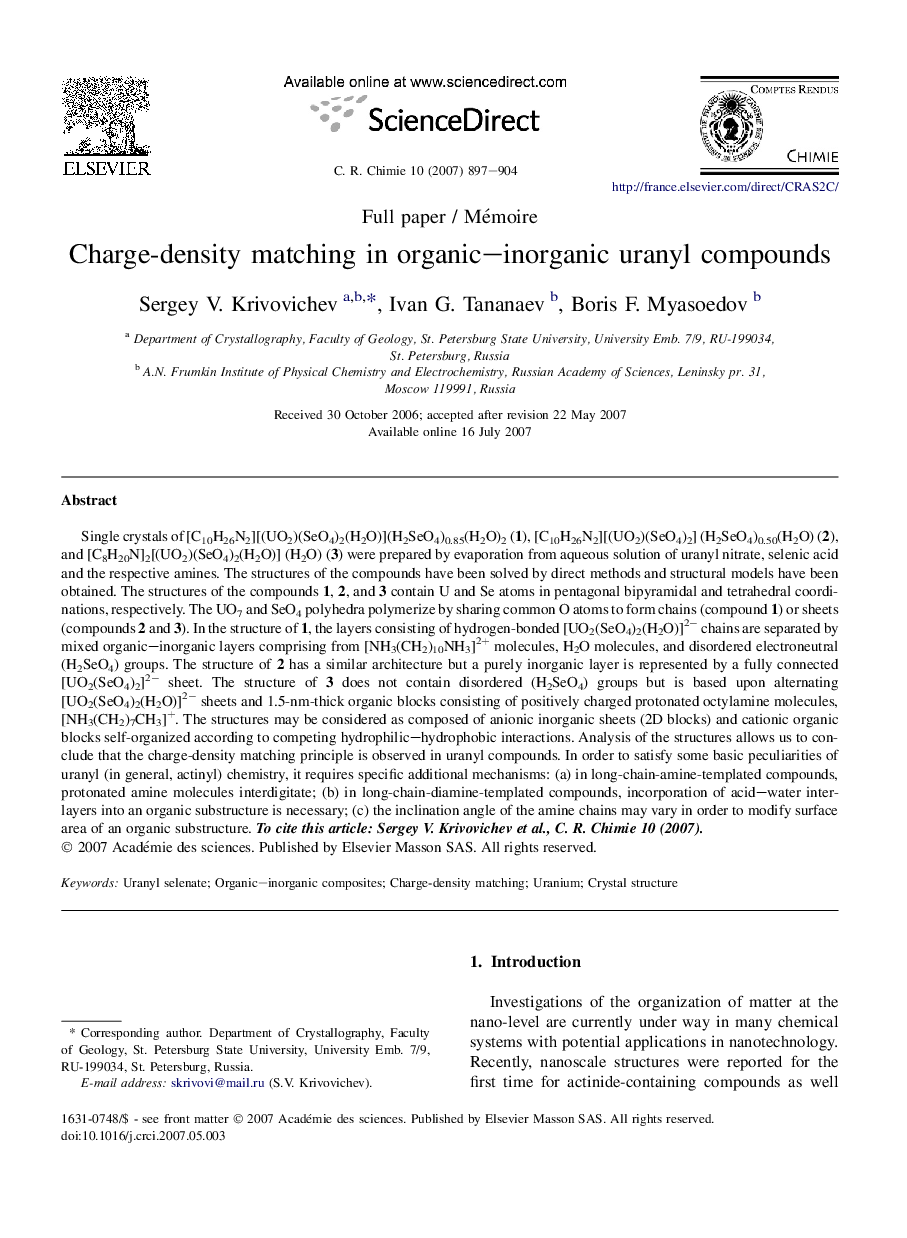| Article ID | Journal | Published Year | Pages | File Type |
|---|---|---|---|---|
| 171650 | Comptes Rendus Chimie | 2007 | 8 Pages |
Single crystals of [C10H26N2][(UO2)(SeO4)2(H2O)](H2SeO4)0.85(H2O)2 (1), [C10H26N2][(UO2)(SeO4)2] (H2SeO4)0.50(H2O) (2), and [C8H20N]2[(UO2)(SeO4)2(H2O)] (H2O) (3) were prepared by evaporation from aqueous solution of uranyl nitrate, selenic acid and the respective amines. The structures of the compounds have been solved by direct methods and structural models have been obtained. The structures of the compounds 1, 2, and 3 contain U and Se atoms in pentagonal bipyramidal and tetrahedral coordinations, respectively. The UO7 and SeO4 polyhedra polymerize by sharing common O atoms to form chains (compound 1) or sheets (compounds 2 and 3). In the structure of 1, the layers consisting of hydrogen-bonded [UO2(SeO4)2(H2O)]2− chains are separated by mixed organic–inorganic layers comprising from [NH3(CH2)10NH3]2+ molecules, H2O molecules, and disordered electroneutral (H2SeO4) groups. The structure of 2 has a similar architecture but a purely inorganic layer is represented by a fully connected [UO2(SeO4)2]2− sheet. The structure of 3 does not contain disordered (H2SeO4) groups but is based upon alternating [UO2(SeO4)2(H2O)]2− sheets and 1.5-nm-thick organic blocks consisting of positively charged protonated octylamine molecules, [NH3(CH2)7CH3]+. The structures may be considered as composed of anionic inorganic sheets (2D blocks) and cationic organic blocks self-organized according to competing hydrophilic–hydrophobic interactions. Analysis of the structures allows us to conclude that the charge-density matching principle is observed in uranyl compounds. In order to satisfy some basic peculiarities of uranyl (in general, actinyl) chemistry, it requires specific additional mechanisms: (a) in long-chain-amine-templated compounds, protonated amine molecules interdigitate; (b) in long-chain-diamine-templated compounds, incorporation of acid–water interlayers into an organic substructure is necessary; (c) the inclination angle of the amine chains may vary in order to modify surface area of an organic substructure.
